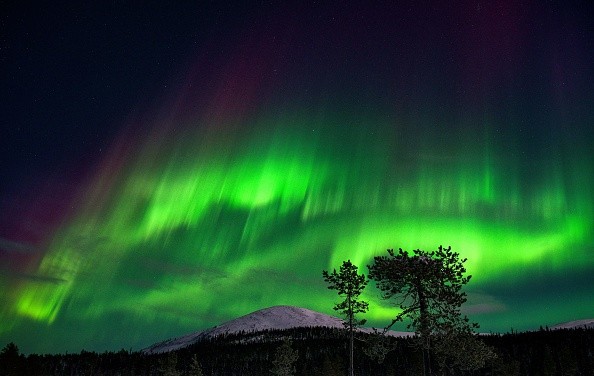
From space, have a happy Fourth of July!
On Earth, fireworks light up the night sky, and on Independence Day, NASA shows off the universe's amazing shows. Let's look into some amazing things that happen in space this Fourth of July.
A Show of Astral Art

A classical nova has been caught on film by the Chandra X-ray Observatory. In 1901, this nova suddenly became one of the brightest stars in the sky. It stayed that way for a few days before going out.
An atomic explosion occurs on the surface of a white dwarf star, the dense leftover matter of a star like the sun. These events tell us much about how stars change over time and how our galaxy works.

The Westerlund 2-star cluster is another amazing thing the Hubble Space Telescope has seen in space. The Swedish scientist Bengt Westerlund gave this group of about 3,000 young stars its name. It is located 20,000 light-years away in the constellation Carina. As a perfect tribute to the Fourth of July, the cluster's bright tapestry looks like a show of sparkling fireworks.
An Aurora That Sparkles

Auroras, which look like lights from space, can be caused by magnetic events in the sun. These coronal mass ejections (CMEs) are sent into space by explosions in the sun. They move over a million miles per hour and reach Earth in three days. These plasma clouds can cause spaceships and satellites to malfunction.
When they combine with Earth's magnetic field, they release vast amounts of energy that cause charged solar particles to hit atoms in Earth's upper atmosphere, creating auroras close to the poles. NASA's THEMIS mission captured these beautiful substorms, showing how solar activity and Earth's magnetosphere constantly change.
The Hubble Space Telescope has also helped us understand how giant black holes behave. At the center of every galaxy is a black hole that is generally quiet but can become active when a star gets too close.
Gaseous matter from the star is ripped away by the black hole's gravity, making a ring around it that gets very hot (millions of degrees). Gas particles move at speeds very close to the speed of light from the black hole's poles outward. Observations of the Centaurus A galaxy reveal these dramatic events, offering a glimpse into the powerful forces at play in our universe.
Spending the 4th of July in Space
Astronauts Thomas K. Mattingly and Henry W. Hartsfield celebrated the Fourth of July in space for the first time in 1982 when they flew back to Earth on the space shuttle Columbia. Since then, many American pilots have spent Independence Day in space.
When STS-50 took place in 1992, the crew of the space shuttle Columbia celebrated the holiday. In 2003, during the STS-71 mission, NASA astronauts Ellen S. Baker and Bonnie J. Dunbar spent their second Fourth of July in space.
Since November 2000, when people started living on the International Space Station (ISS), at least one American astronaut has spent every Independence Day in space. Celebrations have ranged from small events to sending video messages to Earth.
Christopher J. Cassidy, an astronaut on Expedition 36, ran on the ISS track during a road race in 2013. In 2018, the Expedition 56 crew brought back a special American flag that had flown on the first space shuttle flight. The flag represents the ongoing spirit of patriotism and exploration.
As NASA looks to the future, with trips to the moon and other places, celebrating Independence Day in space will remain a beloved tradition. With six men on the ISS, 2024 is the year with the most Americans in space on July 4th since 2006. It makes us proud to know that the spirit of independence and discovery goes far beyond our world and into the vastness of space, where the fireworks are showing off.
Check out more news and information on Space in Science Times.












